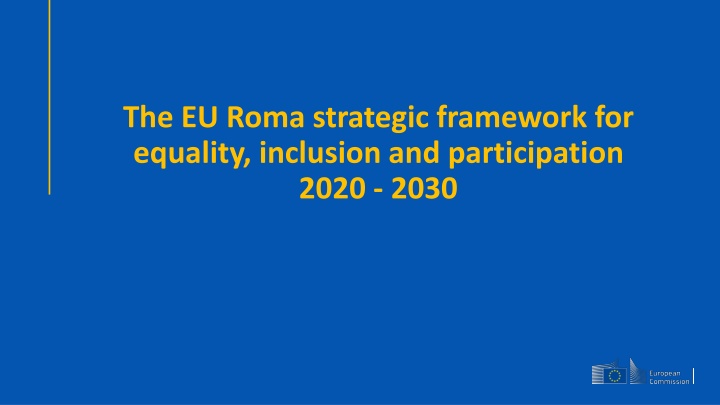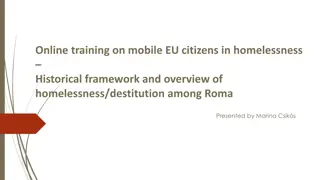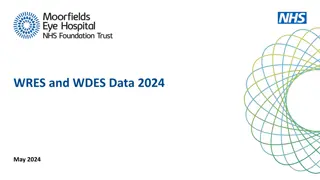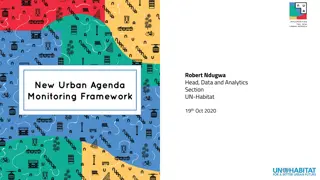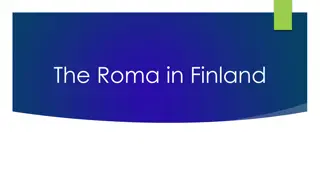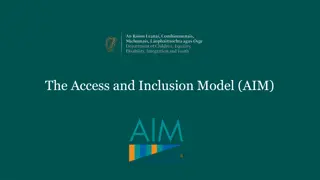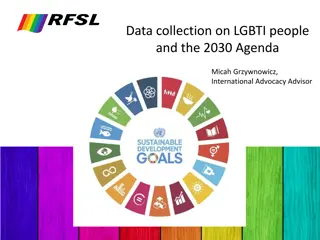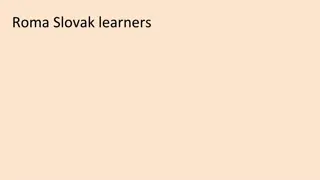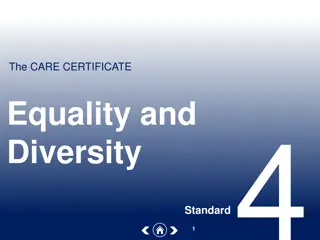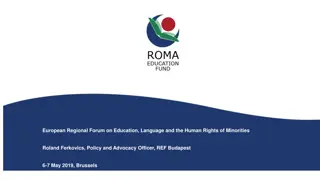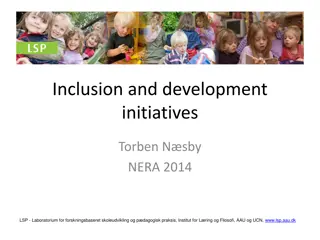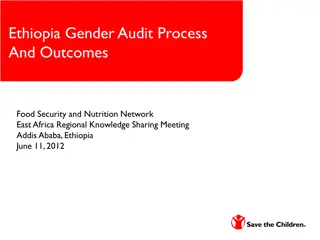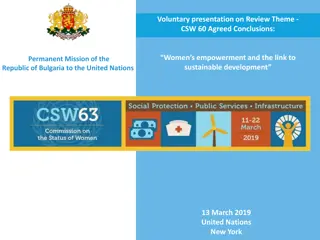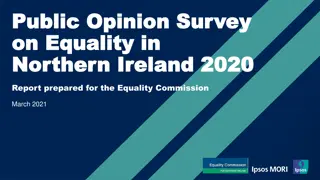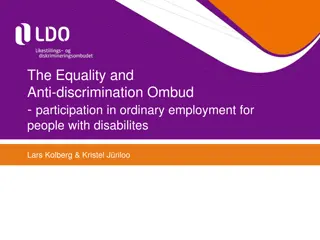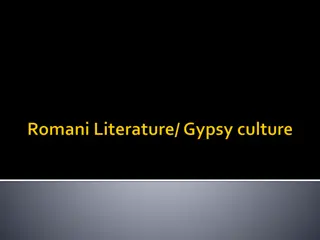EU Roma Strategic Framework for Equality & Inclusion 2020-2030
The EU Roma Strategic Framework for Equality, Inclusion, and Participation 2020-2030 focuses on reducing poverty and exclusion among Roma communities, promoting empowerment and cooperation, combating discrimination, improving healthcare access, enhancing employment opportunities, ensuring adequate housing, and fostering inclusive education. The framework sets out seven interlinked objectives and headline targets for 2030 to address disparities and advance Roma integration across the European Union.
Download Presentation

Please find below an Image/Link to download the presentation.
The content on the website is provided AS IS for your information and personal use only. It may not be sold, licensed, or shared on other websites without obtaining consent from the author.If you encounter any issues during the download, it is possible that the publisher has removed the file from their server.
You are allowed to download the files provided on this website for personal or commercial use, subject to the condition that they are used lawfully. All files are the property of their respective owners.
The content on the website is provided AS IS for your information and personal use only. It may not be sold, licensed, or shared on other websites without obtaining consent from the author.
E N D
Presentation Transcript
The EU Roma strategic framework for equality, inclusion and participation 2020 - 2030
Three-pillar approach EU Framework up to 2020 New EU Roma Strategic Framework Equality Socio-economic integration of marginalised Roma Inclusion Participation
Towards a stronger impact Stronger focus on diversity among Roma: women, youth, children, older Roma, LGBTI, EU mobile citizens, stateless, people with disabilities Reaching out to all Roma (not only the marginalised), and to society at large Stronger focus on combining mainstreaming Roma inclusion across policy areas with targeted measures supporting effective equal access to rights and services Differentiated approach among Member States within a common framework
Components of the package Communication with two annexes: Guidance for national strategies Portfolio of indicators Draft Council Recommendation with guidance for concrete measures to achieve EU objectives and targets Staff Working Document outlining the methodological, analytical and contextual basis of the proposal, baseline data from FRA
Seven interlinked objectives Reduce poverty and exclusion to close the socio-economic gap between Roma and the general population Promote participation through empowerment, cooperation and trust Fight and prevent antigypsyism and discrimination Improve Roma health and increase effective equal access to quality healthcare and social services Increase effective equal access to quality and sustainable employment Increase effective equal access to adequate desegregated housing and essential services Increase effective equal access to quality inclusive mainstream education
Examples of EU headline targets for 2030 Participation in early childhood education and care: 42% of Roma children (92% general population) Cutting the gap in participation in early childhood education and care at least in half Life expectancy gap: 10.4 years for women/10.2 years for men between Roma and general population Cutting the life expectancy gap at least in half Reducing the gap in housing deprivation by at least one third Cutting the gap in overcrowding at least in half Housing deprivation: 61% of Roma (18% general population) Overcrowding: 78% of Roma (17% general population) Minimum 2030 targets EU baseline
Additional indicators Education Share secondary education Share of children attending segregated schools of pupils completing upper Health Share of people with restricted access to health and social services Share of people without medical insurance coverage Housing Share of people in households without tap water
Elements of the draft Council Recommendation Objectives Providing stronger guidance to Member States and renewing their commitment to addressing the challenges faced by Roma communities Setting out concretemeasures that Member States can adopt to achieve equality, inclusion and participation of Roma Five chapters 1) Combating antigypsyism by promoting equality, inclusion and participation 2) Sectoral objectives: education, employment, health and housing 3) Partnerships and institutional capacity 4) Funding 5) Monitoring and reporting
The way forward A ten-year timeframe until 2030, recognising that tackling discrimination and exclusion requires long-term commitments Definition of national measures in cooperation with all stakeholders and use of the portfolio of indicators Member States are asked to submit their national strategies by September 2021. Member States report on implementation every two years starting in June 2023. Mid-term evaluation and ex-post evaluation by the Commission, based on Member States and civil society reporting and FRA surveys
Thank you very much for your attention! Hristina Petkova Unit D1 Non-discrimination and Roma coordination Directorate-General for Justice and Consumers (DG JUST) European Commission Hristina.Petkova@ec.europa.eu
Useful links Communication http://www.cc.cec/sg/vista/home?documentDetails&DocRef=COM/2020/620&ComCat=SPINE&ticket=ST-23650568- DCBmJ7Kp2t4IqhJl7MUzq9mSYPqvoLFNACeTHiOFIiizI0ELqrLOzyiU0PlBCjERvM9I8KVdtug6dgBHlp47l10-rS0vSrmBGYCpQFxmS9e8pC- w2fd6J7bqitGODtxUT1crOV4Av1ZCExixFCzmQGPnfXD4IVUHCF8DfEn2HcYOhzvxIbkFrQZRiU6TCqf49RwOzW Proposal for Council Recommendation http://www.cc.cec/sg/vista/home?documentDetails&DocRef=COM/2020/621&ComCat=SPINE Staff working document https://ec.europa.eu/info/files/commission-staff-working-document-analytical-document-accompanying-eu-roma-strategic-framework-equality-inclusion-and- participation_bg https://ec.europa.eu/info/policies/justice-and-fundamental-rights/combatting-discrimination/roma-eu/roma-equality-inclusion-and- participation-eu_bg http://www.nccedi.government.bg/bg/node/333
